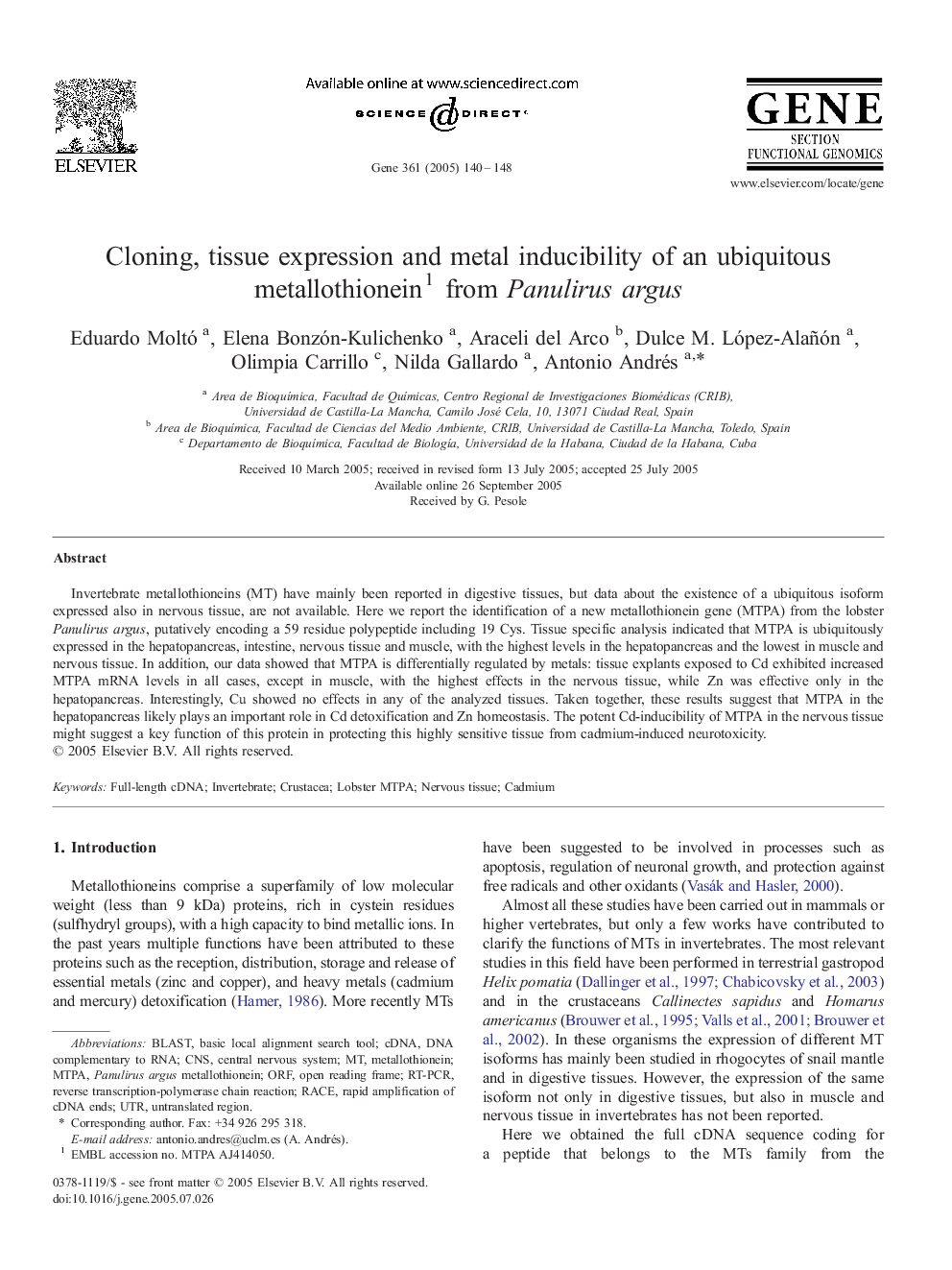| Article ID | Journal | Published Year | Pages | File Type |
|---|---|---|---|---|
| 9126857 | Gene | 2005 | 9 Pages |
Abstract
Invertebrate metallothioneins (MT) have mainly been reported in digestive tissues, but data about the existence of a ubiquitous isoform expressed also in nervous tissue, are not available. Here we report the identification of a new metallothionein gene (MTPA) from the lobster Panulirus argus, putatively encoding a 59 residue polypeptide including 19 Cys. Tissue specific analysis indicated that MTPA is ubiquitously expressed in the hepatopancreas, intestine, nervous tissue and muscle, with the highest levels in the hepatopancreas and the lowest in muscle and nervous tissue. In addition, our data showed that MTPA is differentially regulated by metals: tissue explants exposed to Cd exhibited increased MTPA mRNA levels in all cases, except in muscle, with the highest effects in the nervous tissue, while Zn was effective only in the hepatopancreas. Interestingly, Cu showed no effects in any of the analyzed tissues. Taken together, these results suggest that MTPA in the hepatopancreas likely plays an important role in Cd detoxification and Zn homeostasis. The potent Cd-inducibility of MTPA in the nervous tissue might suggest a key function of this protein in protecting this highly sensitive tissue from cadmium-induced neurotoxicity.
Keywords
UTRORFMTPART-PCRcDNAFull-length cDNADNA complementary to RNABasic Local Alignment Search ToolBlastNervous tissueInvertebraterapid amplification of cDNA endsCNSCrustaceacentral nervous systemopen reading frameMetallothioneinRaceuntranslated regionreverse transcription-polymerase chain reactionCadmium
Related Topics
Life Sciences
Biochemistry, Genetics and Molecular Biology
Genetics
Authors
Eduardo Moltó, Elena Bonzón-Kulichenko, Araceli del Arco, Dulce M. López-Alañón, Olimpia Carrillo, Nilda Gallardo, Antonio Andrés,
